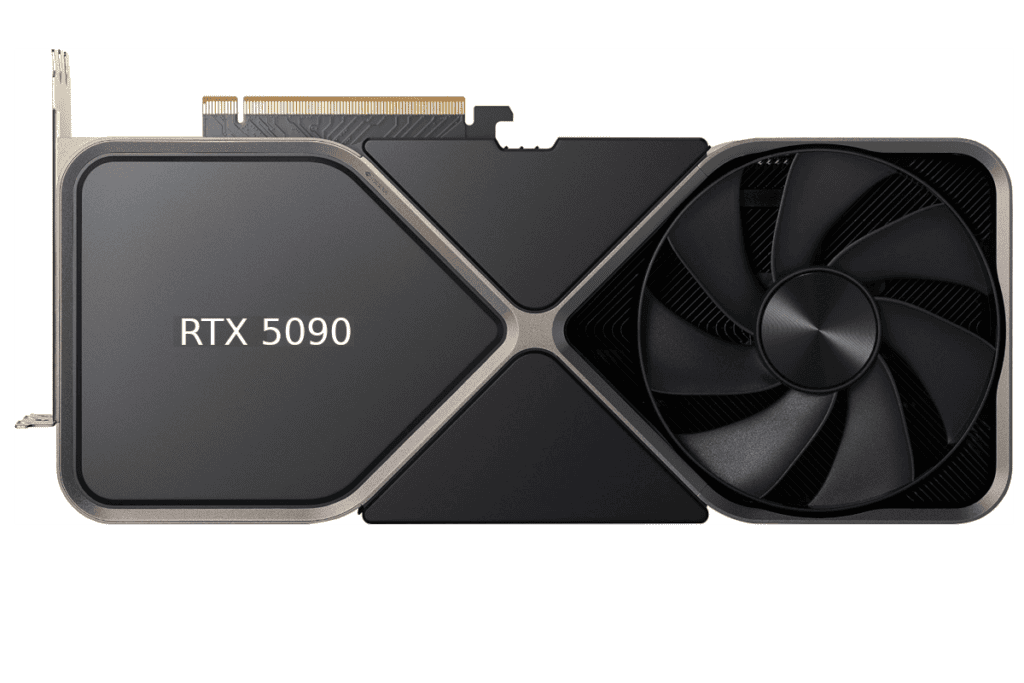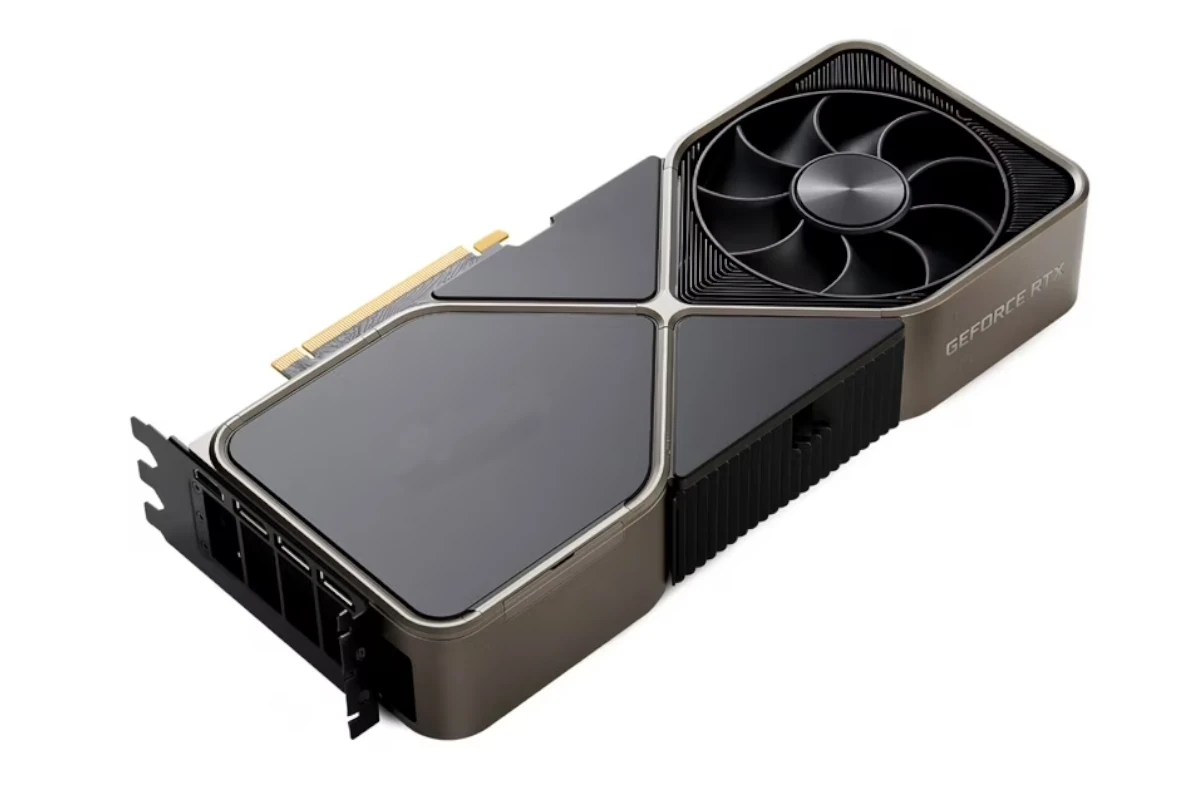Graphics cards play a vital role in modern computing, particularly for gaming enthusiasts and professionals who need high-performance visual processing. We’re anticipating a significant lineup of blockbuster games in 2025. Both the NVIDIA RTX 50 series and the Radeon 8000 series are expected to be unveiled at CES 2025, with their release likely to follow shortly after in the first quarter of 2025. There will be no shortage of options for PC builders, and everyone is eager to see what NVIDIA and AMD will deliver.
Additionally, Intel is expected to launch its new Battlemage line earlier than previously thought (with the most recent reports indicating a release in 2024). It’s not expected that those cards will be able to compete at the high end with AMD or NVIDIA based offerings, however.

Top-Tier GPUs for 2025
The graphics card market is always changing, with new models that offer better performance and features. When choosing a GPU, it’s important to consider your gaming resolution, frame rates, and special features like ray tracing or upscaling technologies. High-end cards give excellent performance, but mid-range and budget options also provide great value for most users. As technology advances, new generations of graphics cards keep improving visual quality and processing power.
Here’s a look at some of the best graphics cards for gaming in 2025:
High-End Graphics Cards
- NVIDIA GeForce RTX 5090: Expected to be the flagship model, offering the best performance for demanding games and high resolutions.
- AMD Radeon RX 8900 XTX: AMD’s top-of-the-line card, likely to compete with the RTX 5090 in terms of raw power.
Mid-Range Graphics Cards
- NVIDIA GeForce RTX 5080: A more affordable option that still delivers excellent performance for 1440p and 4K gaming.
- AMD Radeon RX 8800 XT: AMD’s mid-range offering, expected to provide a good balance of price and performance.
Entry-Level Graphics Cards
- NVIDIA GeForce RTX 5070: A great choice for 1080p gaming and esports titles.
- AMD Radeon RX 8700 XT: AMD’s entry-level option, likely to be a strong contender for budget-minded gamers.
Factors to Consider
- Budget: Determine how much you’re willing to spend on a graphics card.
- Resolution and Refresh Rate: Consider the resolution and refresh rate of your monitor. Higher resolutions and refresh rates require more powerful graphics cards.
- Types of Games: The types of games you play will influence the level of performance you need. Demanding AAA titles require more powerful cards than less graphically intensive games.
- Features: Some graphics cards offer additional features like ray tracing or AI-powered upscaling. Consider whether these features are important to you.
| Graphics Card | Category | Expected Performance | Key Features |
|---|---|---|---|
| NVIDIA GeForce RTX 5090 | High-End | Best in class | Ray tracing, DLSS 3 |
| AMD Radeon RX 8900 XTX | High-End | Top-tier | FSR 3, high VRAM |
| NVIDIA GeForce RTX 5080 | Mid-Range | Excellent for 1440p/4K | Ray tracing, DLSS 3 |
| AMD Radeon RX 8800 XT | Mid-Range | Balanced price/performance | FSR 3 |
| NVIDIA GeForce RTX 5070 | Entry-Level | Great for 1080p | Ray tracing, DLSS 3 |
| AMD Radeon RX 8700 XT | Entry-Level | Budget-friendly | FSR 3 |
Key Takeaways
- Graphics cards come in a wide range of performance levels and price points to suit different needs
- High-end GPUs offer cutting-edge features like advanced ray tracing and AI-powered upscaling
- Value-oriented options provide strong performance for budget-conscious buyers
Top GPU picks for every budget
Nvidia’s RTX 4090 stands out as the ultimate graphics card for those seeking unparalleled performance. It delivers a true next-generation experience, albeit at a premium price point. For gamers wanting top-tier AMD performance, the Radeon RX 7900 XTX impresses with its chiplet design, often outperforming the RTX 4080 at a more attractive price.
In the $600-$800 range, the Nvidia GeForce RTX 4070 Ti Super excels. It offers superb gaming performance at high refresh rates for 1080p and 1440p resolutions. With 16GB of VRAM and DLSS 3 support, it’s also capable of handling 4K gaming effectively.
For those with a budget between $500-$600, the Nvidia GeForce RTX 4070 Super is a strong contender. This refreshed mid-range GPU boasts an increased core count, making it superior to its predecessor at the same price point. It outperforms both cheaper 40-series cards and the AMD RX 7900 GRE.
In the $350-$500 category, AMD’s offering shines. While lacking some advanced features like ray tracing, it provides excellent 1440p performance and is currently the best performing card under $500. Its multi-chip design may not push technological boundaries, but its lower price compensates for this.
The $250-$350 segment sees the RX 6700 XT as a standout choice. Despite lacking Nvidia’s DLSS 3 and Frame Gen technologies, it offers substantial graphics power for its price, making it a tough competitor for the RTX 4060 Ti.
For budget-conscious gamers, the AMD Radeon RX 7600 presents a compelling option. It delivers solid 1080p performance and excellent value. While not revolutionary, it competes well against the pricier RTX 4060.
Key features to consider when choosing a graphics card include:
- VRAM capacity
- Ray tracing capabilities
- DLSS support (for Nvidia cards)
- Power consumption
- Memory bandwidth
- CUDA cores (for Nvidia GPUs)
| Resolution | Recommended GPU |
|---|---|
| 1080p | RX 7600 |
| 1440p | RTX 4070 Super |
| 4K | RTX 4090 |
When selecting a GPU, consider your gaming needs:
- For 1080p gaming: Budget options like the RX 7600 suffice
- For 1440p gaming: Mid-range cards like the RTX 4070 Super offer great performance
- For 4K gaming: High-end options like the RTX 4090 or RX 7900 XTX are ideal
Remember to factor in your monitor’s capabilities, preferred game settings, and future-proofing needs when making a decision. The right GPU can significantly enhance your gaming experience, providing smoother framerates and enabling advanced visual features.
NVIDIA’s RTX 4090: A Powerhouse GPU
The NVIDIA GeForce RTX 4090 stands as the pinnacle of graphics card technology. This GPU delivers unparalleled performance for gaming and creative tasks. Its massive size matches its exceptional capabilities.
The RTX 4090 boasts impressive specifications:
- 16,432 CUDA cores
- 2,520 MHz boost clock
- 24 GB GDDR6X memory
- 1,008 GB/s memory bandwidth
- 450W TGP (Total Graphics Power)
These specs translate to real-world performance that outshines previous generations. The RTX 4090 excels at 4K gaming, providing smooth framerates in demanding titles. For content creators, its rendering power significantly reduces workload times.
NVIDIA’s DLSS 3 technology enhances the RTX 4090’s capabilities. This AI-powered feature boosts framerates while maintaining image quality. It’s particularly effective at high resolutions, where performance gains are most noticeable.
The card’s physical size presents both advantages and challenges. Its large cooler helps manage heat output effectively. However, PC builders must ensure their cases can accommodate this behemoth. Measuring compatibility is crucial before purchase.
Power requirements are another consideration. The 450W TGP demands a robust power supply unit. Users should factor in potential system upgrades when selecting a PSU for the RTX 4090.
Price remains a significant barrier for many consumers. The RTX 4090’s premium performance comes with a premium cost. It targets enthusiasts and professionals who require top-tier graphics processing.
For 4K gaming enthusiasts, the RTX 4090 offers:
- Consistently high framerates
- Ray tracing without significant performance loss
- Future-proofing for upcoming demanding titles
Content creators benefit from:
- Faster render times
- Improved viewport performance in 3D applications
- Enhanced AI-assisted workflows
The RTX 4090’s value proposition varies based on use case. Gamers focused on 1080p or 1440p gaming may find it overkill. Those aiming for 4K or higher resolutions will appreciate its power. Professionals can justify the cost through improved productivity.
NVIDIA’s driver support and feature set add to the RTX 4090’s appeal. Regular updates enhance performance and compatibility. Features like NVIDIA Broadcast and RTX Voice benefit streamers and content creators.
Cooling solutions on partner cards vary. Some models feature innovative designs to manage the GPU’s heat output. Noise levels and thermal performance can differ between manufacturers.
The RTX 4090’s release has impacted the GPU market. It sets a new performance benchmark, influencing pricing and expectations for future releases. Competitors must now aim higher to match its capabilities.
For those considering an RTX 4090 purchase, key factors to weigh include:
- Current system compatibility
- Power supply requirements
- Case size and airflow
- Budget constraints
- Intended use (gaming, content creation, or both)
Alternative options exist for budget-conscious buyers. The RTX 4080 and AMD’s high-end offerings provide strong performance at lower price points. These may better suit users who don’t need the absolute peak of GPU power.
The RTX 4090 shines in specific scenarios:
- 4K gaming with ray tracing enabled
- 8K video editing and rendering
- AI and machine learning tasks
- VR development and high-end VR gaming
Its performance in these areas justifies its price for users who frequently engage in such tasks.
Overclocking potential adds another dimension to the RTX 4090. Enthusiasts can push its limits further, though gains may be modest given its already high stock performance.
In conclusion, the NVIDIA GeForce RTX 4090 represents the current zenith of consumer GPU technology. Its blend of raw power and advanced features makes it a top choice for those seeking the best possible graphics performance. While its size and cost may deter some, for others, it offers unmatched capabilities that can enhance both work and play.
Nvidia GeForce RTX 4080 Super: High-End Gaming Powerhouse
The Nvidia GeForce RTX 4080 Super represents a significant upgrade in the high-end graphics card market. This GPU offers impressive performance at a more competitive price point than its predecessor.
Key specifications of the RTX 4080 Super include:
- 10,240 CUDA cores
- 2,550 MHz boost clock
- 58 TFLOPs of computing power
- 16 GB GDDR6X memory
- 23 GT/s memory clock
- 736 GB/s memory bandwidth
- 320W TGP (Total Graphics Power)
The RTX 4080 Super delivers excellent 4K gaming performance, especially when ray tracing is involved. Its efficiency is noteworthy, making it a strong contender for gamers seeking high-quality visuals without excessive power consumption.
Pricing is a key factor in the RTX 4080 Super’s appeal. At $999 MSRP, it’s $200 less than the original RTX 4080. This price reduction makes it more competitive against AMD’s offerings, particularly the RX 7900 XTX.
For gamers focused on ray tracing, the RTX 4080 Super shines. It handles the demanding calculations of ray tracing efficiently, providing smooth frame rates at 4K resolution. The addition of DLSS 3 and Frame Generation technology further enhances its capabilities, allowing for even better performance in supported games.
However, potential buyers should consider a few factors:
- Limited performance gain: The RTX 4080 Super offers minimal performance improvements over the standard RTX 4080.
- Price concerns: Despite the price cut, some may still find $999 too steep for a graphics card.
- AMD competition: The RX 7900 XTX remains a strong alternative, often outperforming the RTX 4080 Super in non-ray tracing scenarios.
The RTX 4080 Super is best suited for gamers who:
- Want top-tier 4K gaming performance
- Value ray tracing and DLSS technology
- Can find the card at or below MSRP
It may not be ideal for those who:
- Don’t prioritize ray tracing
- Are looking for the absolute best price-to-performance ratio
- Already own an RTX 4080 or similar high-end GPU
In terms of design, the RTX 4080 Super features an updated shroud, giving it a fresh look compared to its predecessor. This aesthetic change, coupled with the performance capabilities, makes it an attractive option for PC builders looking to create a visually striking and powerful system.
The card’s efficiency is worth highlighting. It delivers performance comparable to previous generation top-tier cards like the RTX 3090 while consuming significantly less power. This efficiency translates to lower heat output and potentially quieter operation, depending on the specific model and cooling solution.
For content creators, the RTX 4080 Super offers substantial benefits. Its CUDA cores and tensor cores provide acceleration for various creative applications, from video editing to 3D rendering. The 16GB of GDDR6X memory ensures ample space for large projects and complex scenes.
When comparing the RTX 4080 Super to AMD’s offerings, the choice becomes less clear-cut. In pure rasterization performance, AMD’s RX 7900 XTX often matches or slightly exceeds the RTX 4080 Super. However, Nvidia’s superior ray tracing performance and the mature DLSS ecosystem give it an edge in certain scenarios.
The RTX 4080 Super’s position in the market is unique. It’s not the absolute top performer – that title still belongs to the much more expensive RTX 4090 – but it offers a compelling balance of performance and price for high-end gaming and content creation.
Potential buyers should also consider the broader Nvidia ecosystem. Features like Nvidia Broadcast for streamers, NVENC for video encoding, and optimized drivers for creative applications add value beyond raw gaming performance.
It’s important to note that actual pricing and availability may vary. While the MSRP is set at $999, market conditions can affect retail prices. Buyers should compare prices across different models and retailers to find the best deal.
In conclusion, the Nvidia GeForce RTX 4080 Super is a powerful graphics card that offers high-end performance at a more palatable price point than its predecessor. Its strengths in ray tracing and efficiency make it a strong contender for gamers and content creators alike. However, its value proposition depends heavily on individual needs and budget constraints.
NVIDIA GeForce RTX 4080: High-End Gaming Power
The NVIDIA GeForce RTX 4080 stands as a powerful graphics card in the high-end gaming market. It offers impressive performance gains over its predecessors, making it a strong contender for gamers seeking top-tier visual experiences.
Key Specifications:
- 9,728 CUDA cores
- 2,505 MHz boost clock
- 48.8 TFLOPs
- 16 GB GDDR6X memory
- 22.4 GT/s memory clock
- 717 GB/s memory bandwidth
- 320W TGP
The RTX 4080 outperforms both the RTX 3090 and 3080 Ti from the previous generation. Its advanced ray tracing capabilities and AI-enhanced performance deliver realistic visuals and improved frame rates.
One of the RTX 4080’s standout features is DLSS 3 support. This technology uses AI to generate additional frames, significantly boosting performance in supported games. When factoring in DLSS 3, the RTX 4080 can nearly double the performance of similarly priced last-gen cards like the RTX 3080 Ti.
Performance Comparison:
- vs RTX 3080 Ti: Up to 2x faster with DLSS 3
- vs RX 7900 XTX: Similar performance, edge to RTX 4080 with DLSS 3
- vs RTX 4080 Super: Virtually identical (1-2% difference)
While the RTX 4080 impresses with its performance, its pricing has been a point of contention. At launch, the $1,200 price tag was considered steep by many consumers and reviewers. This pricing strategy left the RTX 4080 in an awkward position, especially after the release of the RTX 4080 Super.
The RTX 4080 Super offers nearly identical performance at a $200 lower MSRP of $999. This makes the original RTX 4080 a less attractive option unless found at a significant discount. Ideally, buyers should look for the RTX 4080 priced under $999 to consider it a good value.
Pros:
- Excellent gaming performance
- DLSS 3 support
- Efficient design
Cons:
- Originally overpriced at $1,200
- Large physical size
- Overshadowed by RTX 4080 Super
For potential buyers, the decision to purchase an RTX 4080 hinges largely on price. At or near its original MSRP, it’s difficult to recommend over the RTX 4080 Super. However, if found at a substantial discount below $999, it becomes a much more attractive option for high-end gaming rigs.
The card’s physical size is worth noting. Some users may find it challenging to fit the RTX 4080 in smaller cases. Proper case compatibility should be verified before purchase.
In terms of competition, the AMD Radeon RX 7900 XTX offers similar raw performance at a lower price point. However, the RTX 4080’s DLSS 3 support can give it an edge in supported games.
For those building a new high-end system or upgrading from older generation cards, the RTX 4080 provides a substantial performance boost. It’s particularly well-suited for 4K gaming and can handle most modern titles at high frame rates and settings.
The RTX 4080’s AI-enhanced capabilities extend beyond gaming. Content creators and professionals working with 3D rendering or video editing may find value in its improved performance for workstation tasks.
In conclusion, the NVIDIA GeForce RTX 4080 is a capable high-end graphics card that offers excellent performance. However, its value proposition is heavily dependent on finding it at the right price. Potential buyers should carefully compare it to the RTX 4080 Super and consider their specific needs and budget before making a decision.
AMD Radeon RX 7900 XTX: Powerhouse Performance
The AMD Radeon RX 7900 XTX stands as the pinnacle of AMD’s graphics card lineup. This powerhouse GPU offers impressive performance for 4K gaming and content creation. With its advanced RDNA 3 architecture, the RX 7900 XTX brings significant improvements over its predecessors.
Key specifications:
- 6,144 shaders
- 2,500 MHz boost clock
- 61.4 TFLOPs
- 24 GB GDDR6 memory
- 20 GT/s memory clock
- 960 GB/s memory bandwidth
- 355W TGP
The RX 7900 XTX showcases AMD’s innovation with its chiplet design. This approach allows for better performance scaling and efficiency. The card’s 24 GB of GDDR6 memory provides ample space for demanding games and creative workloads.
Performance-wise, the RX 7900 XTX offers a substantial leap over the previous generation RX 6950 XT. Gamers can expect up to 20% higher frame rates in most titles, with some games showing even greater improvements. This performance boost comes with improved power efficiency, making the RX 7900 XTX an attractive option for high-end gaming rigs.
Ray tracing capabilities have seen a notable upgrade in the RDNA 3 architecture. While still behind NVIDIA’s offerings, the RX 7900 XTX shows significant progress in this area. For gamers who prioritize traditional rasterization performance, this card delivers excellent results.
Price and value are strong points for the RX 7900 XTX. Initially launched at $999, it can now be found for around $850. This pricing makes it competitive against NVIDIA’s RTX 4080 Super, offering similar performance in many scenarios at a lower cost.
Pros:
- Excellent 4K gaming performance
- Large 24 GB memory buffer
- Competitive pricing
- Improved ray tracing over previous generation
Cons:
- Higher power consumption
- Runs hot, especially reference models
- Inconsistent performance against RTX 4080 Super
For content creators, the RX 7900 XTX’s 24 GB of memory proves valuable. This large buffer allows for smooth handling of high-resolution textures and complex 3D scenes. Video editors and 3D artists will appreciate the extra headroom for their projects.
Thermal performance has been a point of concern, particularly with reference models. Some users have reported high hotspot temperatures under load. Third-party designs from manufacturers like ASUS and Sapphire have addressed these issues with improved cooling solutions.
Benchmark results show the RX 7900 XTX trading blows with the RTX 4080 in various games. While it doesn’t consistently outperform NVIDIA’s offering, it often comes close at a lower price point.
Gaming performance at 4K resolution:
| Game | RX 7900 XTX FPS | RTX 4080 FPS |
|---|---|---|
| Cyberpunk 2077 | 58 | 62 |
| Red Dead Redemption 2 | 89 | 93 |
| Forza Horizon 5 | 121 | 125 |
| Shadow of the Tomb Raider | 132 | 140 |
Note: Actual performance may vary based on system configurations and game settings.
For users considering an upgrade, the RX 7900 XTX offers a compelling package. It provides a significant boost over previous-generation cards and competes well with current high-end offerings. The card’s strengths include:
- Strong 4K gaming performance
- Large memory buffer for content creation
- Improved ray tracing capabilities
- Competitive pricing
Potential buyers should weigh these advantages against the card’s higher power consumption and thermal considerations. Third-party models with enhanced cooling solutions may be preferable for those concerned about temperatures.
AMD’s official product page provides detailed specifications and features for those seeking more information.
The RX 7900 XTX represents AMD’s current best in GPU technology. It offers excellent performance for gamers and content creators alike. While it may not consistently outpace NVIDIA’s top offerings, its competitive pricing and strong feature set make it a worthy contender in the high-end graphics card market.





